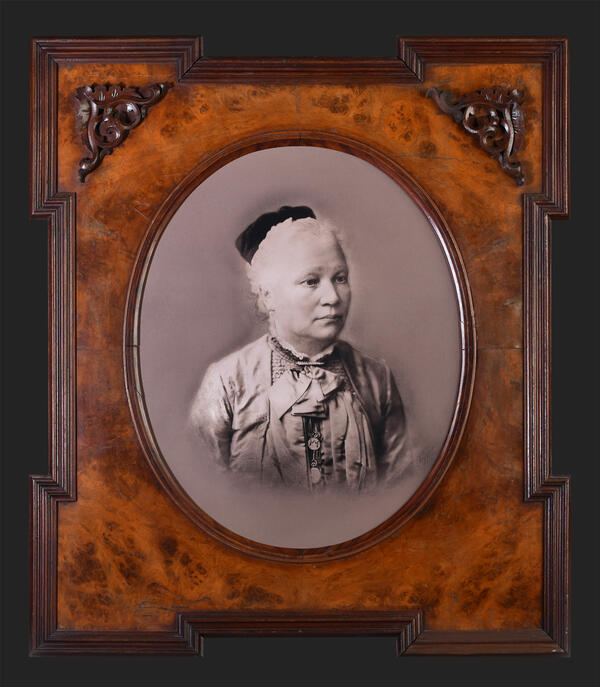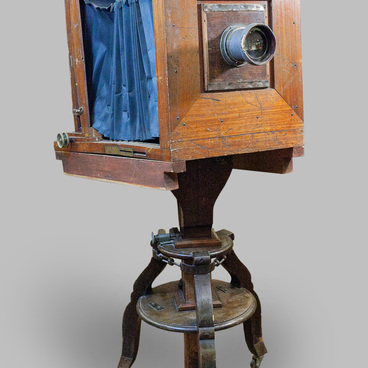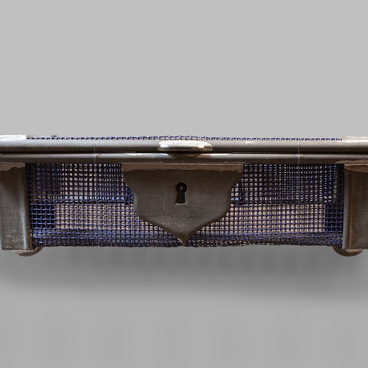The centerpiece of the “Photo Gallery” section is the portrait of a woman in an expensive burr wood frame. It depicts Sophia Karlovna Ionina, the wife of the doctor Nikolay Vasilyevich Ionin who treated the young writer Mikhail Yevgrafovich Saltykov-Shchedrin during his Vyatka exile.
For his dangerous thinking, on April 28, 1848, Mikhail Saltykov-Shchedrin was exiled from St. Petersburg, the capital of Russia, to Vyatka and on July 3, he was made a clerical officer at the Vyatka Government. In November of the same year, he was appointed a special envoy of the Vyatka governor, after which, he held the position of the head of the governorate chancellery for two terms, and in August 1850, he became a councilor of the local government. Saltykov-Shchedrin was friendly with employees, and short-tempered and opinionated with his superiors, wearing his heart on his sleeve. He also did not tolerate bribery and did his best to combat it.
Saltykov-Shchedrin became acquainted with the life of a small governorate capital thanks to his official trips and duties. In November 1855, Mikhail Yevgrafovich received permission to leave Vyatka. He described his experience of living in that small town in his “Provincial Sketches”.
Sophia Ionina and her husband were some of the writer’s closest friends in Vyatka. Saltykov-Shchedrin was very intelligent and witty but hard to deal with. He was not able to find many friends in Vyatka, but the Ionin family were one of them. Sophia Ionina reminisced that Saltykov-Shchedrin could get worked up over nothing, leave the table, and slam the door. After running along Spasskaya Street, he would return back to the table. After that, she would pour him a cup of tea as if nothing had happened, and they would resume their conversation.
The expensive frame of Sophia Ionina’s portrait is made of Vyatka burr wood which is usually used to create unique products. The material was extremely rare, strong, and had a beautiful texture. Burr wood products of Vyatka masters were famous all over the country for their appearance, noble color, unusual texture, and hardness. Vyatka burr wood artists were regular suppliers of the imperial court.
For his dangerous thinking, on April 28, 1848, Mikhail Saltykov-Shchedrin was exiled from St. Petersburg, the capital of Russia, to Vyatka and on July 3, he was made a clerical officer at the Vyatka Government. In November of the same year, he was appointed a special envoy of the Vyatka governor, after which, he held the position of the head of the governorate chancellery for two terms, and in August 1850, he became a councilor of the local government. Saltykov-Shchedrin was friendly with employees, and short-tempered and opinionated with his superiors, wearing his heart on his sleeve. He also did not tolerate bribery and did his best to combat it.
Saltykov-Shchedrin became acquainted with the life of a small governorate capital thanks to his official trips and duties. In November 1855, Mikhail Yevgrafovich received permission to leave Vyatka. He described his experience of living in that small town in his “Provincial Sketches”.
Sophia Ionina and her husband were some of the writer’s closest friends in Vyatka. Saltykov-Shchedrin was very intelligent and witty but hard to deal with. He was not able to find many friends in Vyatka, but the Ionin family were one of them. Sophia Ionina reminisced that Saltykov-Shchedrin could get worked up over nothing, leave the table, and slam the door. After running along Spasskaya Street, he would return back to the table. After that, she would pour him a cup of tea as if nothing had happened, and they would resume their conversation.
The expensive frame of Sophia Ionina’s portrait is made of Vyatka burr wood which is usually used to create unique products. The material was extremely rare, strong, and had a beautiful texture. Burr wood products of Vyatka masters were famous all over the country for their appearance, noble color, unusual texture, and hardness. Vyatka burr wood artists were regular suppliers of the imperial court.



